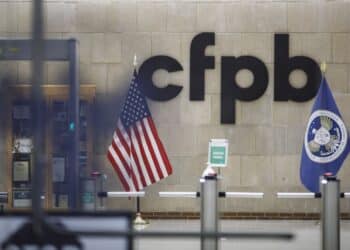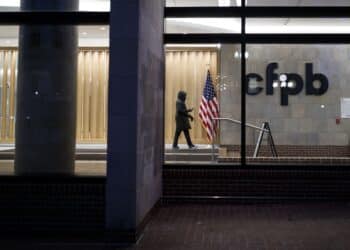Wells Fargo to Pay $1B Fine, Extent of Consumer Harm Undetermined

The consent order does not detail how much the bank will be required to pay back to consumers and instead instructs the bank to submit a “comprehensive remediation plan” within 60 days. The number of total affected consumers and how much it will cost the bank to make them whole has not yet been fully determined by the lender nor the regulators.
“Because of the ongoing nature of the remediation, we won’t know the answer to that question until the remediation is substantially complete,” a spokeswoman told Auto Finance News.
The Consumer Financial Protection Bureau and Office of the Comptroller of the Currency jointly issued the fine against the bank for mischarging mortgage interest rate-lock extensions and misplaced forced collateral protection insurance (CPI) policies on auto borrowers.
Wells Fargo Auto’s retail installment contracts required that borrowers acquire additional insurance products for their vehicle, and if they didn’t, the bank would automatically charge for the policy. However, consumers who independently bought the insurance were often charged for the CPI policy anyway.
Between 2005 and 2016 — when Wells Fargo ended the policy — it’s estimated that 28% of CPI placements were “duplicative” of policies borrowers already held for the entire length of the term, according to the vendor handling the policies. Wells Fargo force placed some 2 million policies in that time, which means 560,000 consumers were impacted.
However, that only accounts for consumers who were wrongly charged for the entire length of the placement. There’s an outstanding question about how many consumers had a temporary lapse in their insurance coverage and are owed partial refunds.
During this time Wells Fargo also “did not refund other fees or related charges, such as repossession fees, late fees, deferral fees, and non-sufficient funds fees,” the consent order states.

(Photo Credit: Gage Skidmore)
A previously leaked report from consulting firm Oliver Wyman identified 800,000 consumers affected including 274,000 borrowers sent into delinquency and 25,000 wrongful repossessions. The bank claims it identified 500,000 consumers and 20,000 wrongful repossessions.
In July 2017, Wells Fargo proactively agreed to pay $80 million in remediation costs to consumers. However those efforts have been fraught as the OCC claimed in a leaked report that the amount was insufficient, and reports showed that Wells Fargo had sent letters to borrowers who were not affected by the policy.
“For more than a year and a half, we have made progress on strengthening operational processes, internal controls, compliance and oversight, and delivering on our promise to review all of our practices and make things right for our customers,” Timothy J. Sloan, president and chief executive officer of Wells Fargo, said in a press release. “While we have more work to do, these orders affirm that we share the same priorities with our regulators and that we are committed to working with them as we deliver our commitments with focus, accountability, and transparency.”
The consent order requires the bank “appoint and maintain an active Compliance Committee of at least three members, of which a majority shall be directors who are not employees or officers of Respondent or any of its subsidiaries or affiliates.”
The CFPB and OCC do not touch Wells Fargo’s outstanding issues with guaranteed asset protection (GAP) policy refunds. The bank is accused of improperly refunding consumers for these GAP policies when borrowers paid off their loans early. The spokeswoman declined to comment on the investigation.














